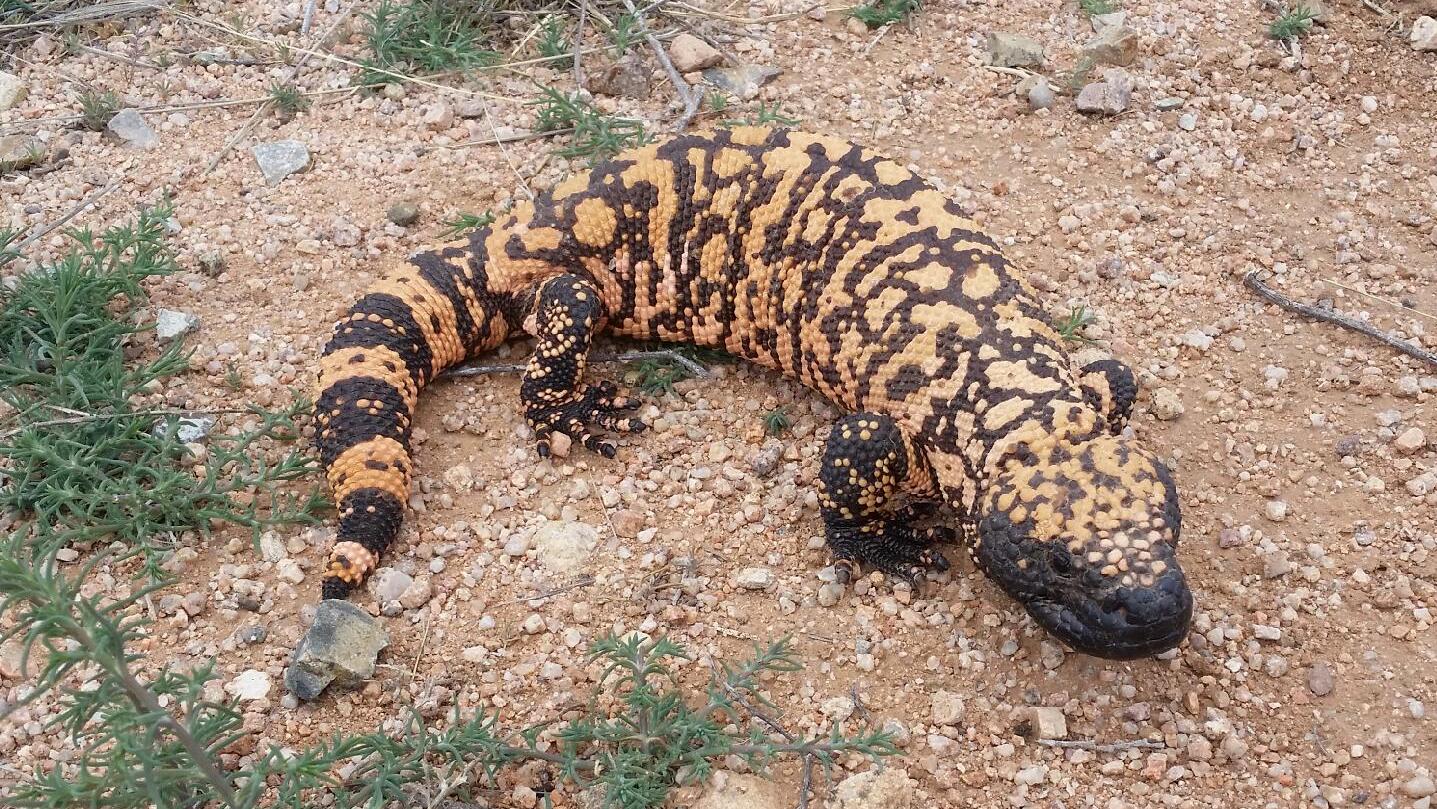Gila Monster (Heloderma suspectum)
The Gila Monster (Heloderma suspectum) is a venomous lizard native to the south-western United States and north-western Mexico. It is one of only a few venomous lizards in the world and the largest native lizard species in the U.S. Despite its fearsome reputation, the Gila monster is slow-moving and generally not dangerous to humans unless provoked.
Contents
-
 Taxonomy and Classification
Taxonomy and Classification -
Physical Description
-
Range and Habitat
-
Behaviour and Diet
-
Venom
-
Reproduction
-
Conservation Status
1. Taxonomy and Classification
- Domain: Eukaryota
-
Kingdom: Animalia
-
Phylum: Chordata
-
Class: Reptilia
-
Order: Squamata
-
Family: Helodermatidae
-
Genus: Heloderma
-
Species: H. suspectum
The Gila monster shares its genus with only one other extant species—the Mexican beaded lizard (Heloderma horridum). The genus name Heloderma means “studded skin,” referring to the lizard’s bead-like scales.
2. Physical Description
The Gila monster is a stocky, slow-moving lizard, with a distinctive and striking appearance.
-
Length: 18 to 22 inches (45 to 56 cm)
-
Weight: 1.5 to 3 pounds (0.7 to 1.4 kg)
-
Colour: Black with pink, orange, or yellow patterns arranged in bands or blotches
-
Skin: Covered in bony bead-like scales called osteoderms
These scales provide protection from predators and harsh desert environments.
3. Range and Habitat
Gila monsters are found primarily in the deserts of the American Southwest, including:
-
Arizona, Nevada, New Mexico, and parts of California
-
Northern Mexico, particularly Sonora and Sinaloa
Habitat:
-
Sonoran and Mojave Deserts
-
Semi-arid shrublands
-
Rocky foothills
-
Often live in burrows, rock crevices, and under vegetation
They spend 90% of their lives underground, emerging mainly in the spring and early summer.
4. Behaviour and Diet
Gila monsters are solitary, crepuscular, and opportunistic feeders. They are most active during early morning and late evening, especially in warmer months.
Diet:
-
Bird and reptile eggs
-
Small mammals
-
Insects
-
Carrion
-
Occasionally small birds and reptiles
They have a slow metabolism and can survive on just a few large meals per year, storing fat in their tails for energy during dormancy.
5. Venom
The Gila monster is one of the few venomous lizards in the world.
Venom Facts:
-
Delivered through grooved teeth in the lower jaw
-
Must chew to inject venom, which is not used to kill prey but rather to subdue it
-
Venom contains neurotoxins and enzymes, causing intense pain and swelling in humans

While rarely life-threatening, a Gila monster bite can be very painful and requires medical attention.
Notably, Gila monster venom has contributed to medical advancements, including the development of Exenatide, a drug used to treat type 2 diabetes.
6. Reproduction
Gila monsters breed in early summer, with males engaging in ritualized wrestling to compete for mates.
-
Mating Season: May to June
-
Eggs Laid: 2 to 12 per clutch, usually in July or August
-
Incubation: 9–10 months, with hatching occurring the following spring
Females bury eggs in sandy or loose soil. Hatchlings are about 6 inches long and are venomous from birth.
7. Conservation Status
The Gila monster is currently classified as “Near Threatened” by the IUCN due to habitat destruction, illegal collection, and vehicle collisions.
Legal Protection:
-
Protected by law in Arizona and Nevada
-
Listed under CITES Appendix II, restricting international trade
Conservation efforts include public education, habitat preservation, and scientific research on their ecological role and medicinal value.
